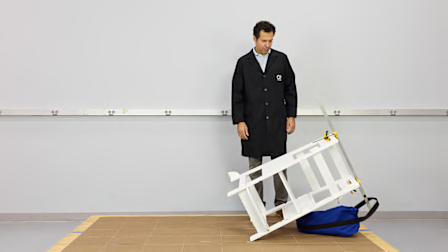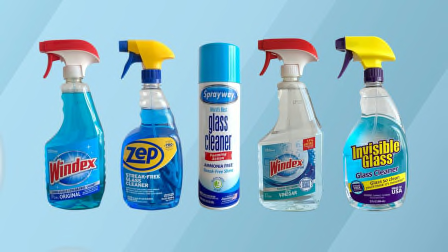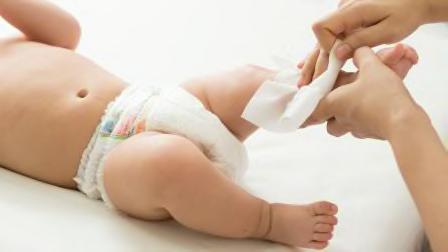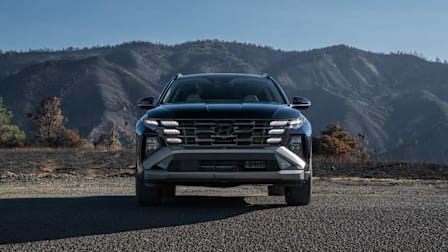5 Dangerous Products Parents Should Avoid to Keep Their Kids Safe
These common toys and baby gear items just pose too much risk, CR’s safety experts say
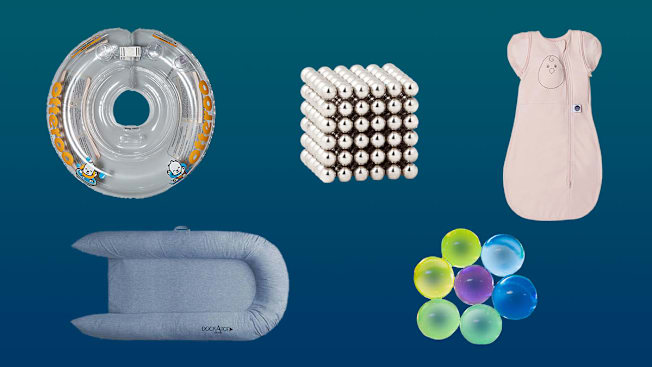
Most people assume that if something is for sale in the U.S., it must be safe to use. Especially baby gear, when the stakes are so high, right?
The reality is that while many kinds of baby products do have to undergo safety testing before hitting the market, a lot can still slip through the cracks. For instance, new types of products might not yet have mandatory safety standards, and so they hit store shelves before any independent testing has taken place. Or sometimes, even when manufacturers or regulators do put safety standards in place, those standards might not go quite far enough to protect kids, in the eyes of safety advocates at CR and elsewhere.
It’s often up to consumers to research product safety themselves, by reading online reviews or looking things up on the public database of incidents reported to the Consumer Product Safety Commission, the federal agency that oversees thousands of household products. But that’s a lot to ask of busy parents, who already have a lot of important demands on their time. Marketing language, misinformation, and the sheer number of options available online can make shopping for safe baby products confusing and overwhelming for parents.
Consumer Reports is here to help. Here are five products that CR’s safety experts say parents and caregivers should skip when they’re getting geared up for a new baby or when they have children of any age in the home.
Infant Loungers
When you’re taking care of a baby 24/7, you’ll need a few safe, comfortable places to put the baby down every once in a while to give your arms a break. But when it comes time for the baby to nap or sleep overnight, the American Academy of Pediatrics says, they always need to be on a firm, flat surface, with nothing soft around them. That’s why infant loungers are dangerous. Many of them have pillowy sides that look cozy and as if they provide good protection, but they can actually pose a risk of suffocation.
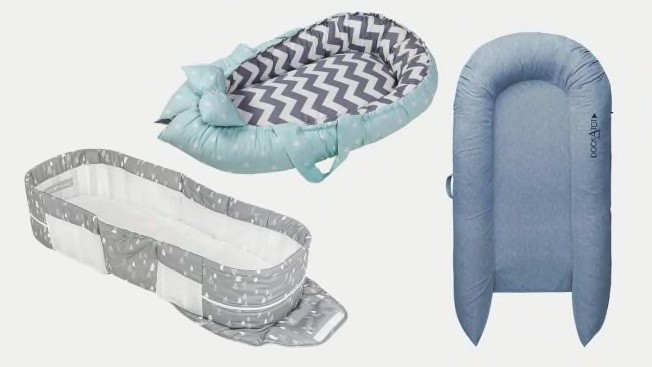
Source: Cutelions, DockATot, Amazon Source: Cutelions, DockATot, Amazon
Infant Neck Floats
Baby neck floats are inflatable or foam rings that fit around a baby’s neck to hold them afloat in the bathtub or pool. Otteroo, one manufacturer, markets them for use on babies as young as two weeks old. The CPSC has pointed to dozens of incidents of babies having to be rescued by caregivers after their heads suddenly slipped through the floats into the water below. Several babies have been sent to the hospital after incidents involving neck floats, and at least two babies in neck floats who were left unattended in bathtubs died.
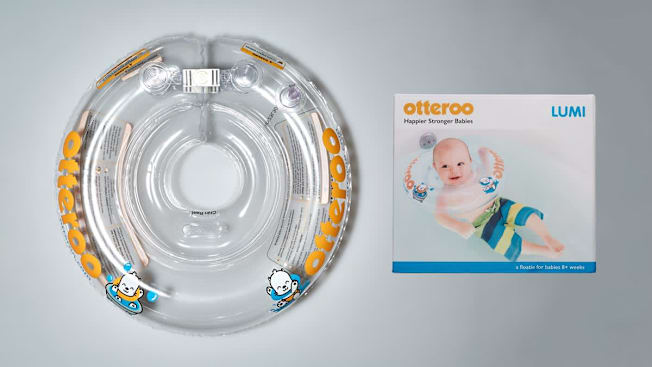
Photo: Consumer Reports Photo: Consumer Reports
In the past several years, both the Food and Drug Administration and the CPSC have issued public warnings about baby neck floats generally, with the CPSC calling out the Otteroo product specifically. Otteroo has maintained that its product is safe as long as parents stay within arm’s reach of their babies, as the instructions say they always should.
There’s a lot of anxiety and misinformation among parents about water safety in pools and bathtubs; dangerous products with misleading claims only add to the problem. Drowning remains a leading cause of death in infants, and in children under 1, drowning is most likely to occur in the bath. CR experts say that infant neck floats should never be used in a tub or pool, and certainly not as a substitute for parental supervision. Much like putting puddle jumpers on toddlers who do not yet know how to swim, neck floats risk giving parents a false sense of security about small infants in the tub.
In August 2025, the CPSC finalized a new safety standard for the design of infant neck floats and improved warning labels that will now be required, but neck floats made prior to this new safety standard can still be sold. CR experts maintain that, despite the new regulations, an outright ban would be more appropriate.
“You cannot rely on warnings,” says Oriene Shin, policy counsel for CR. “Warnings don’t absolve a company of the requirement to create a safe product. These products are not safe, cannot be made safe with warnings, and should not exist. Especially for newborns.”
Weighted Baby Blankets, Swaddles, and Sleep Sacks
Weighted blankets are a popular trend for adults, but medical experts say that weighted baby blankets, swaddles, and sleep sacks should never be used on a baby. Even “gentle pressure” on a baby’s chest or body can potentially inhibit breathing and make it difficult to get out of unsafe sleeping positions that they find themselves in, pediatricians told CR.
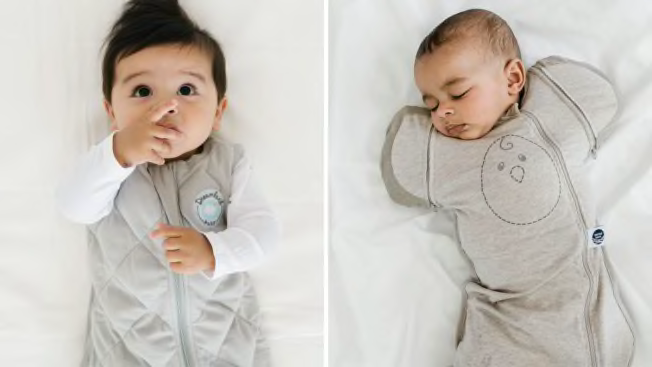
Source: Dreamland, Nested Bean Source: Dreamland, Nested Bean
There are two main manufacturers of weighted sleep products for babies—Nested Bean and Dreamland Baby—and both told CR that a lack of reported injuries related to their increasingly popular products shows that they are safe. But the CPSC has said that there is at least one infant death that has been linked to a weighted product, and the agency currently recommends against using these products, citing information from the Centers for Disease Control and Prevention and the National Institutes for Health. The American Academy of Pediatrics said in a 2023 letter to regulators that they shouldn’t wait until tragedy strikes again to act against this dangerous category of product.
“Waiting for the emergence of confirmatory data about these concerns while these products proliferate is an unacceptable outcome when each of those data points will be a family whose lives are forever marked by unfathomable tragedy of their infant dying from a sleep-related death,” the letter said.
In April 2024, Amazon and Target told CR that they were amending their policies to no longer allow sales of weighted infant sleep products on their sites or store shelves, citing safety concerns. Baby registry website Babylist stopped selling them as well. However, the products have not been recalled, and they remain available for sale elsewhere.
Traditional, nonweighted swaddles and sleep sacks, however, are perfectly safe and recommended for babies—read CR’s expert tips on how and when to use sleep sacks and swaddles and other vital safe-sleep guidelines for babies.
Water Beads
Water beads are expandable gel balls often marketed for “sensory play.” Kids add water to the little tiny seeds and watch them grow to many times their original size. But the problem with that super-expansion is that if the beads accidentally end up inside a human (or an animal) body, they can expand and cause life-threatening injury, like bowel obstruction or, if inhaled, lung damage. (Read CR’s investigation into the dangers posed by water beads.)
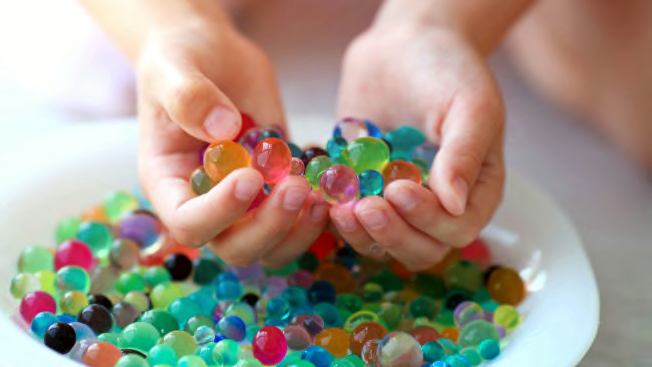
Photo: Adobe Stock Photo: Adobe Stock
The warning labels that are common to many water bead packages (like “nontoxic” or “choking hazard”) fail to warn parents about the gravity of the risk they pose if ingested or inhaled—especially to small babies, who explore the world around them by putting things in their mouths. The CPSC says that an estimated 6,300 water-bead-related ingestion injuries were treated in U.S. emergency rooms between 2017 and 2022, and at least one baby died.
“The risks can’t be ignored,” says Michael Alfonzo, MD, a pediatric emergency medicine physician at NewYork-Presbyterian Komansky Children’s Hospital and Weill Cornell Medicine. “If you have a child under the age of 3, I wouldn’t have them in my home.”
In August 2025, following years of advocacy by CR and other safety organizations, the CPSC voted to approve a new safety rule for water beads. The rule will limit how much the water beads remaining on the U.S. market can expand and how much toxic acrylamide they can contain, and require stronger warning labels. It applies to all water bead toys, even squeeze toys that contain expandable water beads inside them. Ashley Haugen, founder and president of the nonprofit organization That Water Bead Lady, called the new rule “a historic victory for children and product safety.”
CR recommends that parents and caregivers keep water beads of any kind out of the home if children or cognitively impaired adults are ever present. In addition, parents should take care with all squishy sensory toys that are marketed for children, because they commonly contain small rubber or foam balls that can be potential choking hazards, even if the balls do not expand like water beads do.
High-Powered Magnet Sets
Tiny, strong magnet sets typically have been marketed more to adults and teens than to young children—they’ve been sold as fidgety desk toys, or stress relievers. But, unfortunately, kids find them irresistible, too.
If accidentally ingested, these high-powered magnets can find each other and bind together inside the body, causing potentially life-threatening internal injury. They are much stronger than the typical refrigerator magnet—as much as 30 times stronger—and what makes them so fun to play with is also what makes them so dangerous. Over the years, children have died from ingesting magnets, and thousands more children have gone to the hospital. Many require emergency endoscopies and abdominal surgeries to find and remove the magnets from wherever they are stuck.
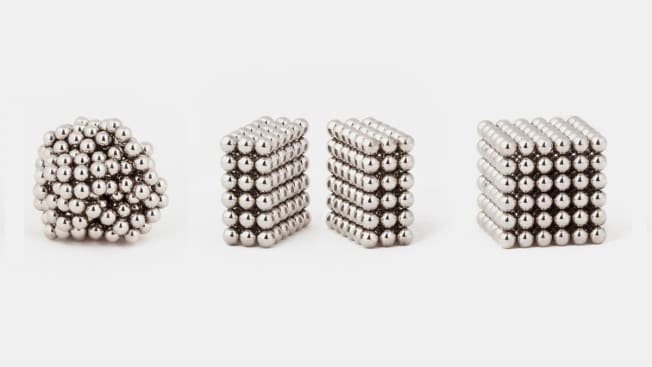
Photo: Getty Images Photo: Getty Images
Unlike water beads, this isn’t a risk that’s much worse with babies or toddlers, either. The CPSC has received multiple incident reports involving teenagers who were injured after using the magnets to pretend they had nose or tongue piercings.
Several brands of small, high-powered magnet sets have been recalled, and a CPSC safety standard took effect in October 2022, but some of the magnet sets are still on the market. The CPSC is working on enforcing its magnet regulation, but in the meantime, CR’s safety advocates advise against buying them—and they say that if you already have them in your home, you should simply (safely) throw them away.
Editor’s Note: This article, originally published in August 2023, has been updated to reflect new developments with these five products, including regulations passed as a result of ongoing advocacy by CR and other safety organizations.
@consumerreports ‘Tis the season of giving—but avoid giving these. Learn more through the link in our bio. #kidsafety #waterbeadsaredangerous #waterbeadsarenotatoy #holidaytiktok #weightedblanket
♬ original sound - Consumer Reports

















